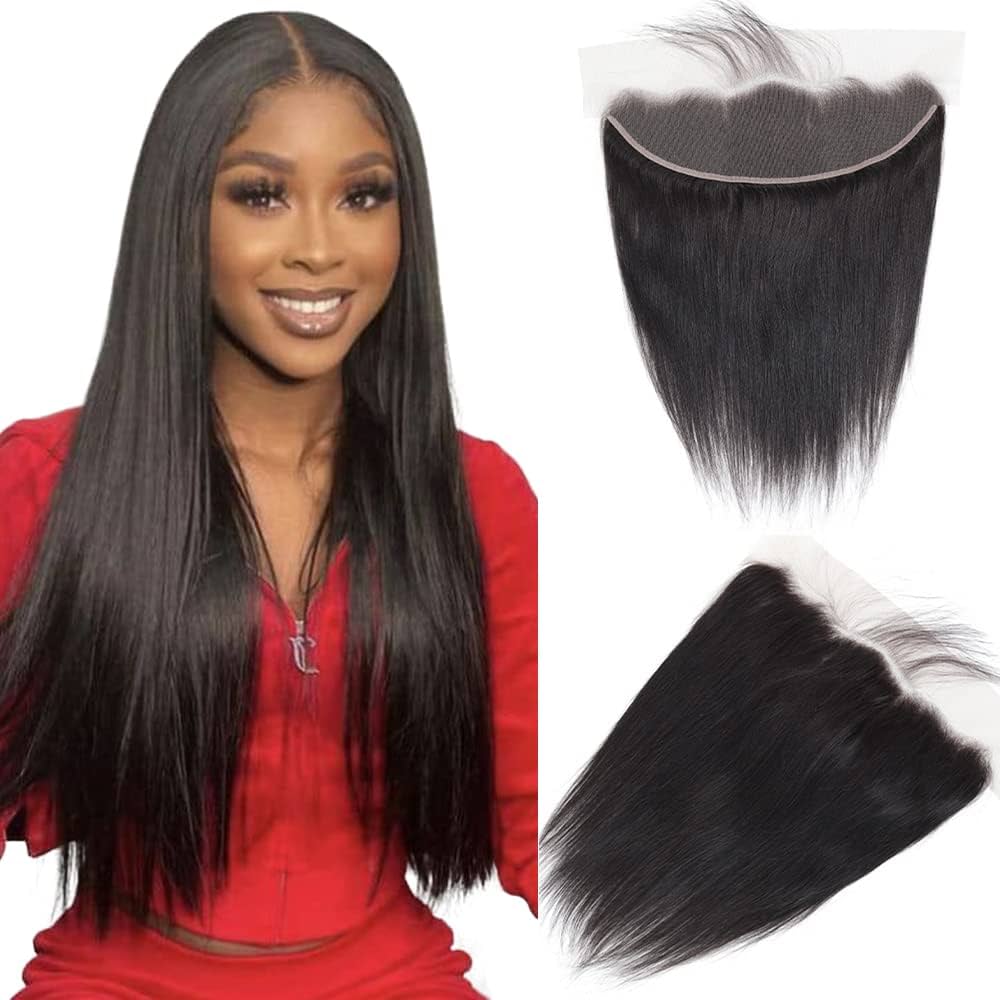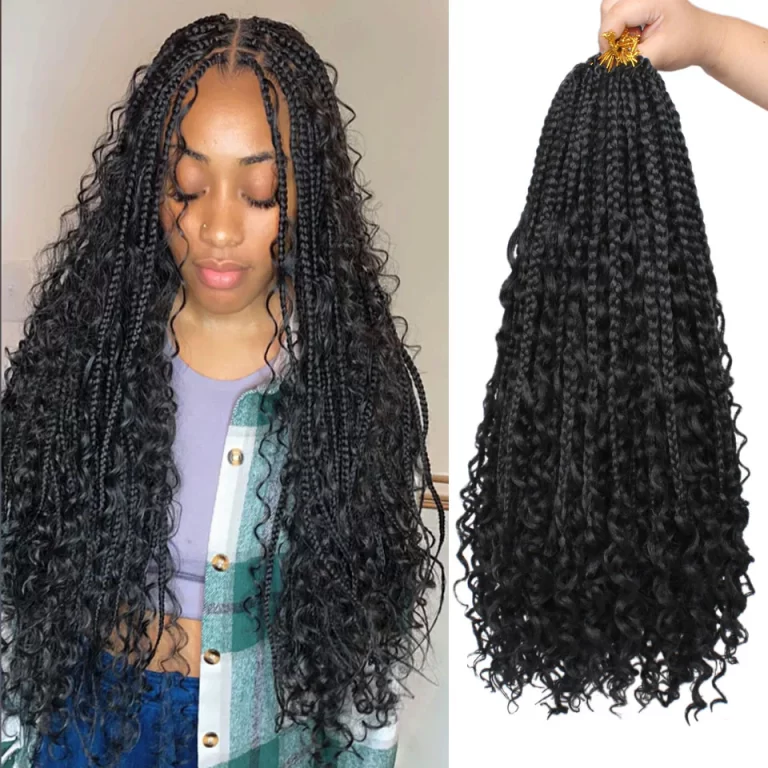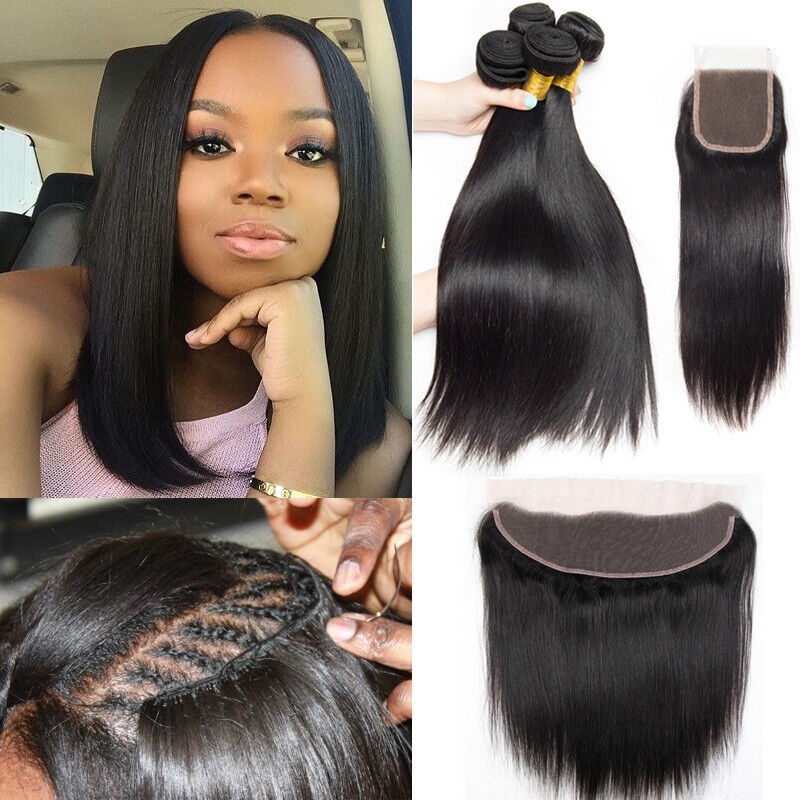
Lace Closure Sew-In: The Ultimate Guide for Your Hairline
What is a Lace Closure Sew-In?
A lace closure sew-in is a popular protective hairstyle. It involves sewing hair extensions onto cornrowed natural hair. A lace closure piece is then added. This piece sits at the top of the head and mimics a natural hairline. It’s an excellent choice for those seeking a natural-looking hairstyle without leaving any hair out.
The Art of a Lace Closure Sew-In
Creating a lace closure sew-in is a meticulous process. It begins with tightly cornrowing the natural hair. This serves as a solid and flat base for sewing the extensions. The lace closure is then carefully placed and sewn at the forehead area. It provides a seamless transition between the natural scalp and the extensions. The result? A flawless, invisible hairline that looks completely natural.
Benefits of Choosing Lace Closure Sew-In for Protective Styling
Choosing a lace closure sew-in offers numerous advantages for hair protection and style:
- Natural Look: The lace closure mimics your natural hairline, making it appear as if hair grows directly from your scalp.
- Versatility: With a lace closure, you can experiment with different partings without damaging your natural hair.
- Less Heat Damage: This style protects your natural hair from heat since you don’t have to blend it with extensions.
- Protection: It covers the entire hairline, which helps in protecting edges and preventing tension which can lead to hair loss.
How Long Does a Lace Closure Sew-In Last?
When considering a lace closure sew-in, longevity is a key factor. This protective style can last between 6 to 12 weeks. However, proper care and quality of hair extensions play a crucial role in how long your sew-in stays fresh and secure.
Factors Influencing the Lifespan of Your Sew-In
Several elements can impact how long your sew-in will last:
- Hair Care Routine: Treating your sew-in like your natural hair is vital. Regular maintenance is essential for a lasting style.
- Extension Quality: Choose high-quality hair extensions. Better quality means a longer lifespan for your sew-in.
- Stylist Expertise: A skilled hairstylist can make all the difference. Their technique can extend the durability of your sew-in.
- Your Hair Growth: Faster natural hair growth may require more frequent touch-ups.
- Lifestyle Activities: Workouts, swimming, and other activities can affect your sew-in’s longevity.
Importance of Hair Quality and Maintenance
To get the most out of your lace closure sew-in, focus on hair quality and upkeep:
- Invest in Human Hair: Virgin human hair extensions trump synthetic alternatives. They last longer and blend seamlessly with natural hair.
- Daily Care: Be gentle. Avoid heavy products and harsh brushing. This helps prevent damage to both your extensions and natural hair.
- Night-time Routine: Protect your sew-in while you sleep. Use a silk scarf or bonnet to reduce tangling and matting.
- Keep It Dry: Wet extensions can tangle. Ensure your hair is fully dry before bed.
By considering these factors and prioritizing quality and care, your lace closure sew-in can provide a lasting, stylish, and protective hair solution.

Choosing the Right Hair for Your Closure Sew-In
Choosing the right hair for your lace closure sew-in is crucial. The type of hair you select affects the longevity, appearance, and overall satisfaction with your sew-in. Here’s a breakdown of how to make the best choices for your next protective hairstyle.
Virgin Human Hair vs Synthetic: Making the Right Investment
When deciding between virgin human hair and synthetic hair for your sew-in, consider longevity and appearance. Virgin human hair is a premium choice as it lasts longer and resembles natural hair closely. Unlike synthetic fibers, virgin human hair can be styled with heat and washed, making it a more practical and natural-looking option. Investing in human hair, although pricier upfront, can save money in the long run due to its durability and reusability.
Texture Matching: Finding Your Perfect Fit
The texture of the hair you choose is essential for a seamless look. Select hair that matches or closely resembles your natural hair texture. This ensures that your sew-in blends well and looks more natural. For example, if you have tightly coiled curls, look for Kinky or Afro-textured extensions; for loose waves, a body wave or loose curl pattern would work well.
Determining the Ideal Length and Color
Finally, consider the length and color of the hair. Length should complement your lifestyle and personal style preference. Longer hair might require more maintenance but offers versatility in styling. When it comes to color, choose extensions that match your natural hair unless you plan on coloring your natural hair as well. Alternatively, custom-dyeing your hair extensions before installation can ensure a perfect match.
By carefully selecting the type, texture, length, and color of the hair for your lace closure sew-in, you can achieve a beautiful, natural-looking protective style that meets your personal needs and style preferences.
Application and Maintenance of Lace Closure Sew-In
Achieving a flawless lace closure sew-in goes beyond the installation. Proper application and consistent upkeep ensure the longevity and beauty of your style. Here are key points to consider when applying and maintaining your lace closure sew-in.
Choosing Between Glued vs Glueless Application Methods
When installing your closure, you have two primary options: glued or glueless.
- Glued Application: This method uses adhesive for attachment, offering a secure fit. However, it generally requires more frequent maintenance, as the glue can lose its hold over time due to natural hair growth and activities. Typically, a glued closure lasts about 2-4 weeks before needing a touch-up.
- Glueless Application: A glueless method relies on sewing the closure directly onto the braids or using clips and bands for a non-adhesive fit. It’s less damaging to the hair and can last for approximately 4-6 weeks before the closure begins to lift. This method is ideal for those concerned about potential damage from glue.
Prepping Your Hair and Closure for Installation
Before applying your closure, follow these preparatory steps for the best results:
- Brush Your Hair: Untangle your natural hair to prepare for cornrowing.
- Clean the Scalp: Use a gentle cleanser to remove any build-up, ensuring a clean base for your sew-in.
- Protect Your Edges: Apply a protective barrier if using glue to safeguard your hairline from potential damage.
Daily Care Techniques and Night-time Routines
Once your lace closure sew-in is in place, daily care and a proper night-time routine are essential.
- Gentle Styling: Avoid rough handling and be gentle when styling your sew-in to maintain the integrity of the closure.
- Use Quality Products: Select products without harsh chemicals like alcohols or parabens to keep the hair healthy.
- Nightly Protection: Use a silk scarf or bonnet to prevent tangling and to keep the hair smooth while you sleep.
- Keep Dry: Ensure your hair is dry before bedtime to avoid matting and unpleasant odors.
By carefully choosing your application method and committing to thorough maintenance, your lace closure sew-in can remain a stunning, protective style for weeks.
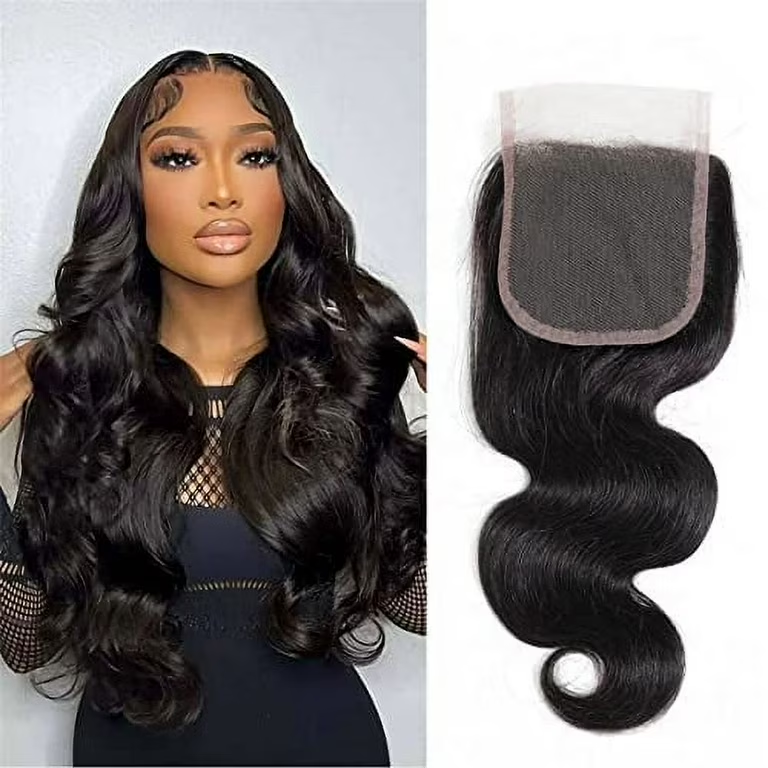
Hair Bundles and Closures: How Many Do You Need?
When planning your lace closure sew-in, the number of hair bundles you’ll need is key. It impacts volume and fullness. Generally, more bundles give a thicker look. However, don’t overdo it as it can strain your natural hair.
Volume Goals and the Ideal Number of Bundles
Seeking a natural density? Usually, two to three bundles with a lace closure suffice. For a fuller look, you might add a third bundle. Keep in mind, though, that too much weight could harm your hair roots.
- For short styles: two bundles with a closure are often enough.
- Mid-length styles: go for three bundles to achieve a balanced volume.
- Long styles: consider three or more bundles, depending on how thick you want it.
Remember, longer hair tends to be lighter at the ends. Adding an extra bundle can ensure a fuller appearance.
Selecting the Right Closure for a Natural Look
A lace closure should match your scalp and hairline perfectly for a natural look. You have options like transparent, HD, and standard lace to explore. Lace closures come in various sizes, with 4×4 inches being common. Larger sizes provide more flexibility for parting the hair.
Choose a closure based on:
- Scalp Match: Opt for a lace tint that blends with your skin tone.
- Parting Style: Decide if you want a middle or side part, or versatility to switch.
- Size: Larger closures allow for more diverse styling options.
When combined, the right number of bundles and the ideal closure create a natural, seamless hair extension style that complements your unique look. Embrace these tips to achieve a balanced, beautiful sew-in that suits your volume goals and gives you the natural appearance you desire.
Lace Closure Varieties and Styling Flexibility
When considering a lace closure sew-in, it’s essential to know about the different types available. This knowledge helps customize your hair look to perfection.
Exploring Different Closure Types: Lace vs Silk
Lace and silk closures are popular, each with unique benefits. Lace closures are more common. They blend well with your scalp, giving a natural appearance. However, they require precise care to maintain their delicate texture.
Silk closures look more like a real scalp and offer a flawless finish. They reflect less light, which helps in achieving a more natural look. These closures are typically thicker than lace, which makes them less prone to damage but can be challenging to blend with finer hair textures.
Each type has its merits, so your choice should depend on personal preference, desired final look, and hair type.
Styling Versatility and Parting Options
Lace closures offer great flexibility in styling. You can choose from various parting styles: middle, side, or no part at all. This allows for different looks with the same sew-in, from sleek ponytails to free-flowing styles.
Adding to the versatility, closures can be cut and shaped to fit any hairline. This makes them ideal for anyone looking to customize their hairstyle extensively.
By understanding these options, you gain the ability to tailor your hair extensions and closures to your unique style and needs, maximizing the potential of your lace closure sew-in.
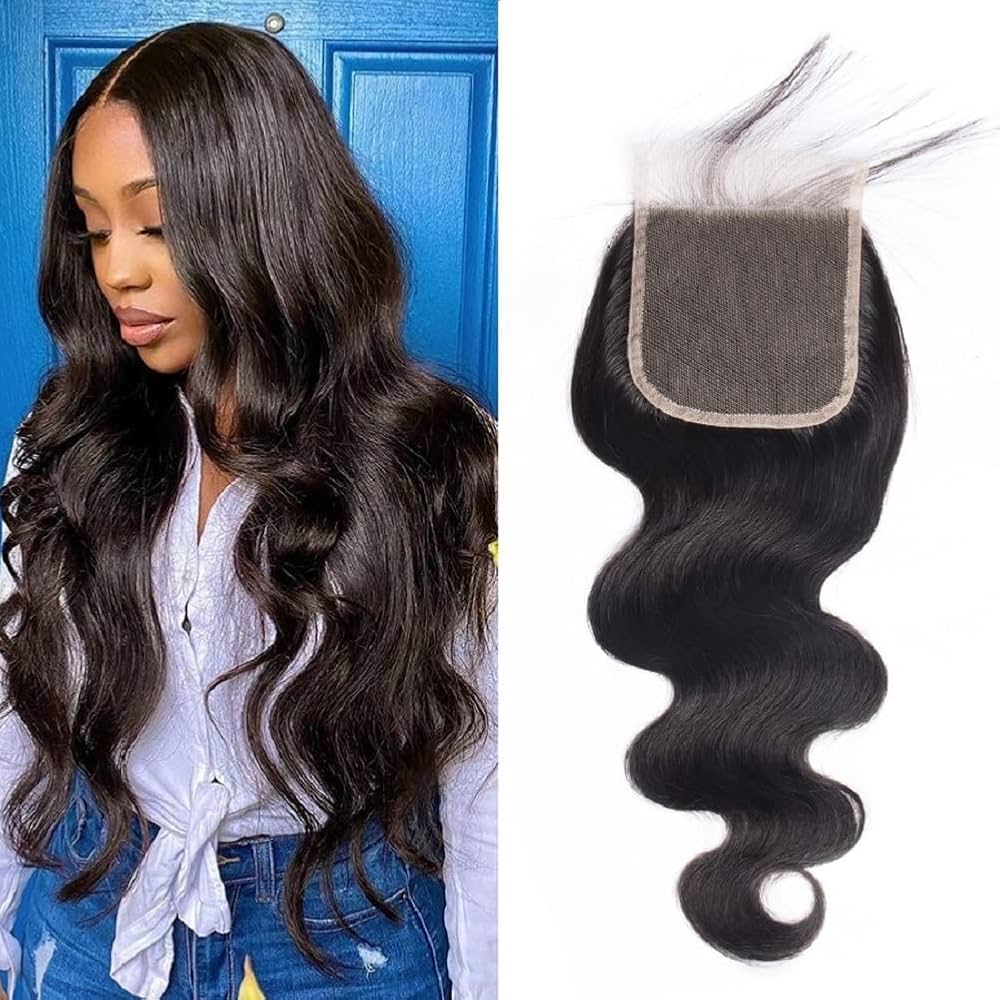
The Pros and Cons of Lace Closure Sew-In vs Wigs
When choosing between a lace closure sew-in and wigs, each has its advantages. Here, we’ll explore the pros and cons to help you decide which suits your needs better.
Advantages of Durability and Convenience with Sew-Ins
Sew-ins offer a long-lasting solution for those who prefer not to adjust their hairstyle frequently. Here are some benefits:
- Stability: Sew-ins stay firmly in place. You don’t worry about them slipping off.
- Low Maintenance: Once installed, sew-ins need less daily upkeep compared to wigs.
- Natural Look: They provide a seamless look that blends with your natural hair.
- Cost-Effective: High-quality weaves can be reused, saving you money over time.
Exploring the Flexibility of Style with Wigs
On the other hand, wigs offer versatility and ease that can be appealing. Here’s why some may opt for wigs over sew-ins:
- Style Variety: Change styles quickly with different wigs whenever you want a new look.
- Convenient: Wigs are simple to put on and take off, great for those with busy lives.
- Less Commitment: Since they’re not sewn in, you can switch wigs without commitment to one style.
- Hair Protection: Wigs can protect your natural hair from daily wear and tear.
Choosing between a lace closure sew-in and a wig depends on your lifestyle, budget, and hair care preferences. Both have their unique perks. Sew-ins offer long-term durability, while wigs give you the freedom to switch up your look with ease.
